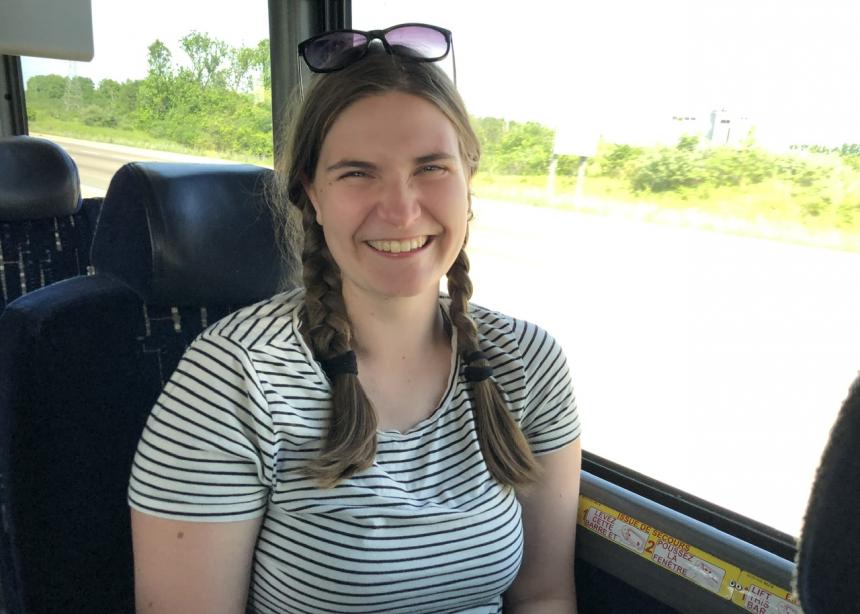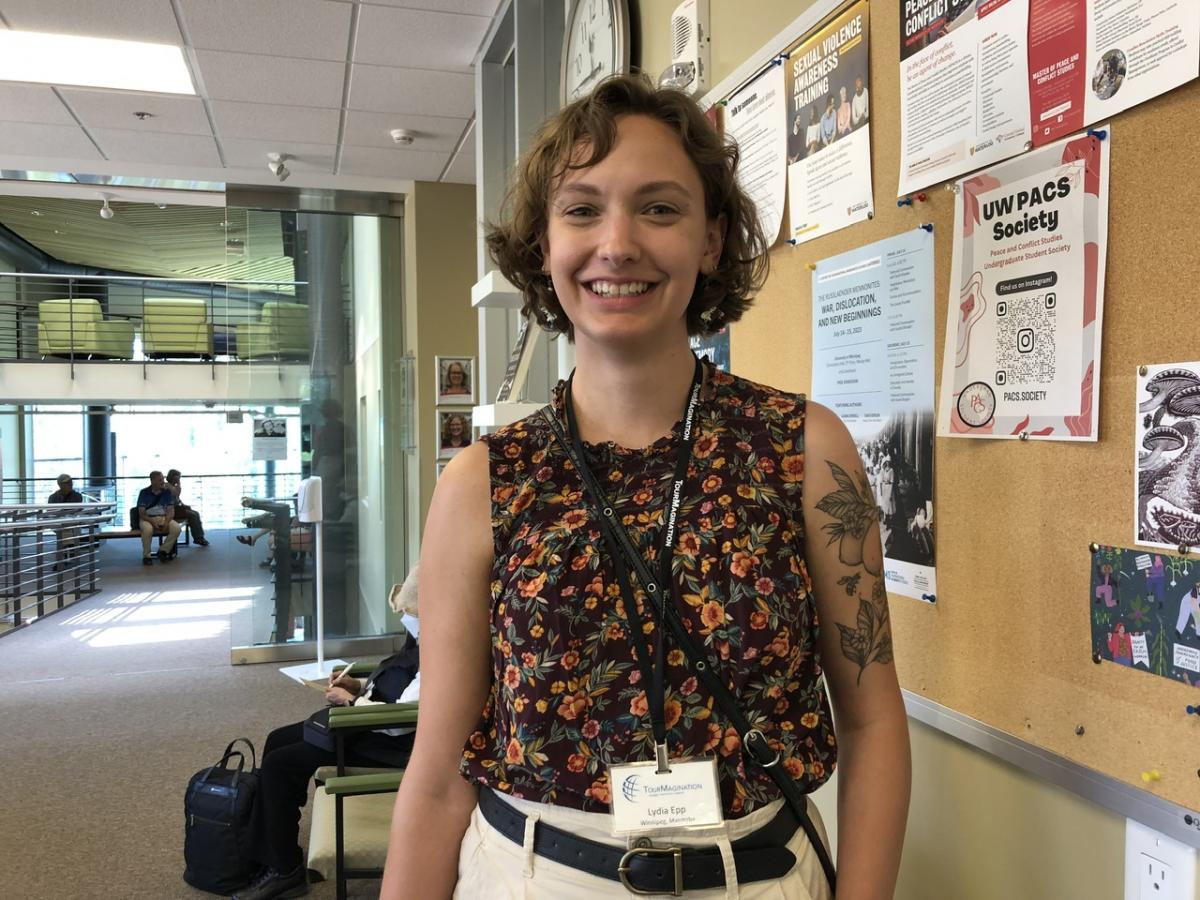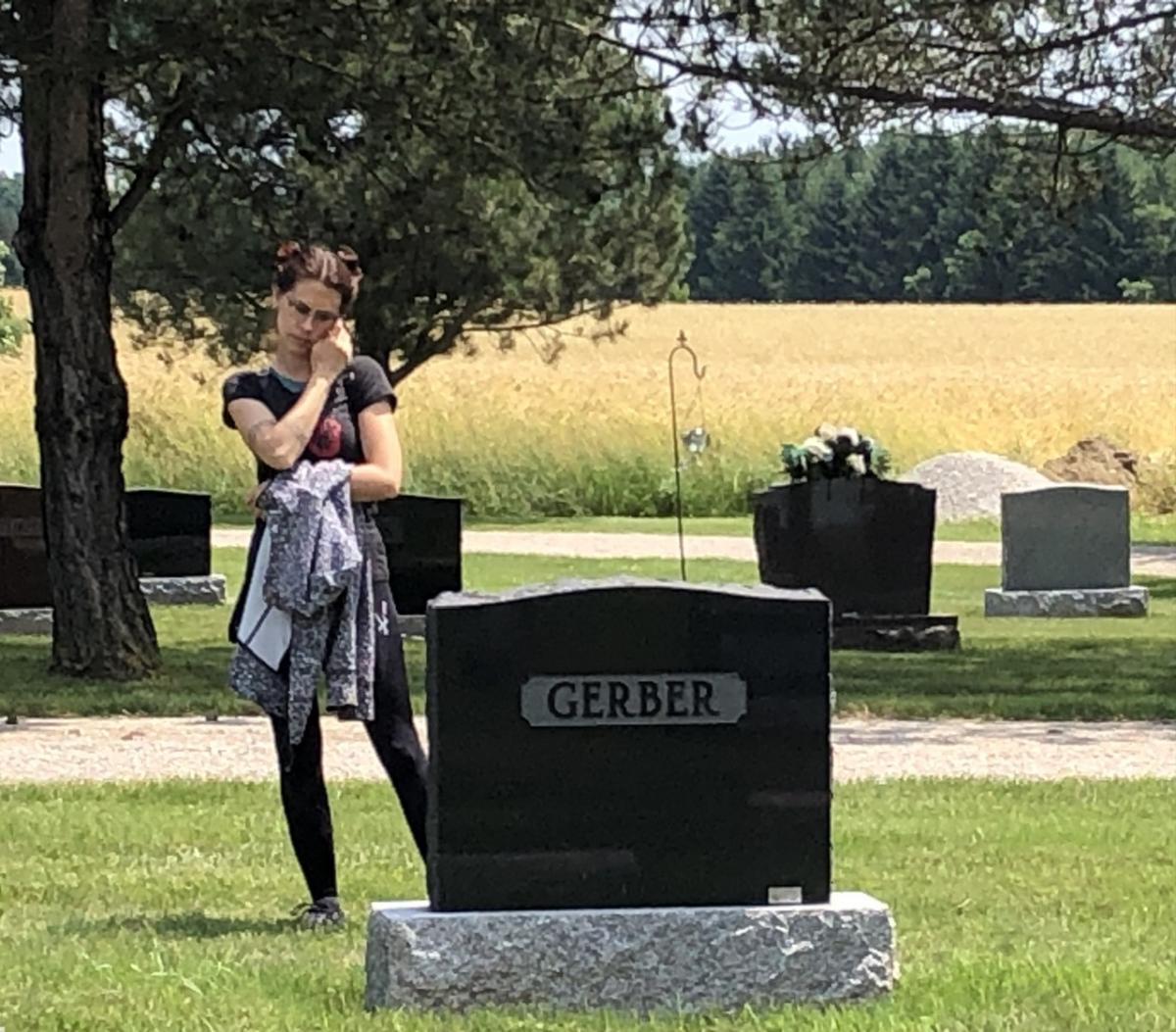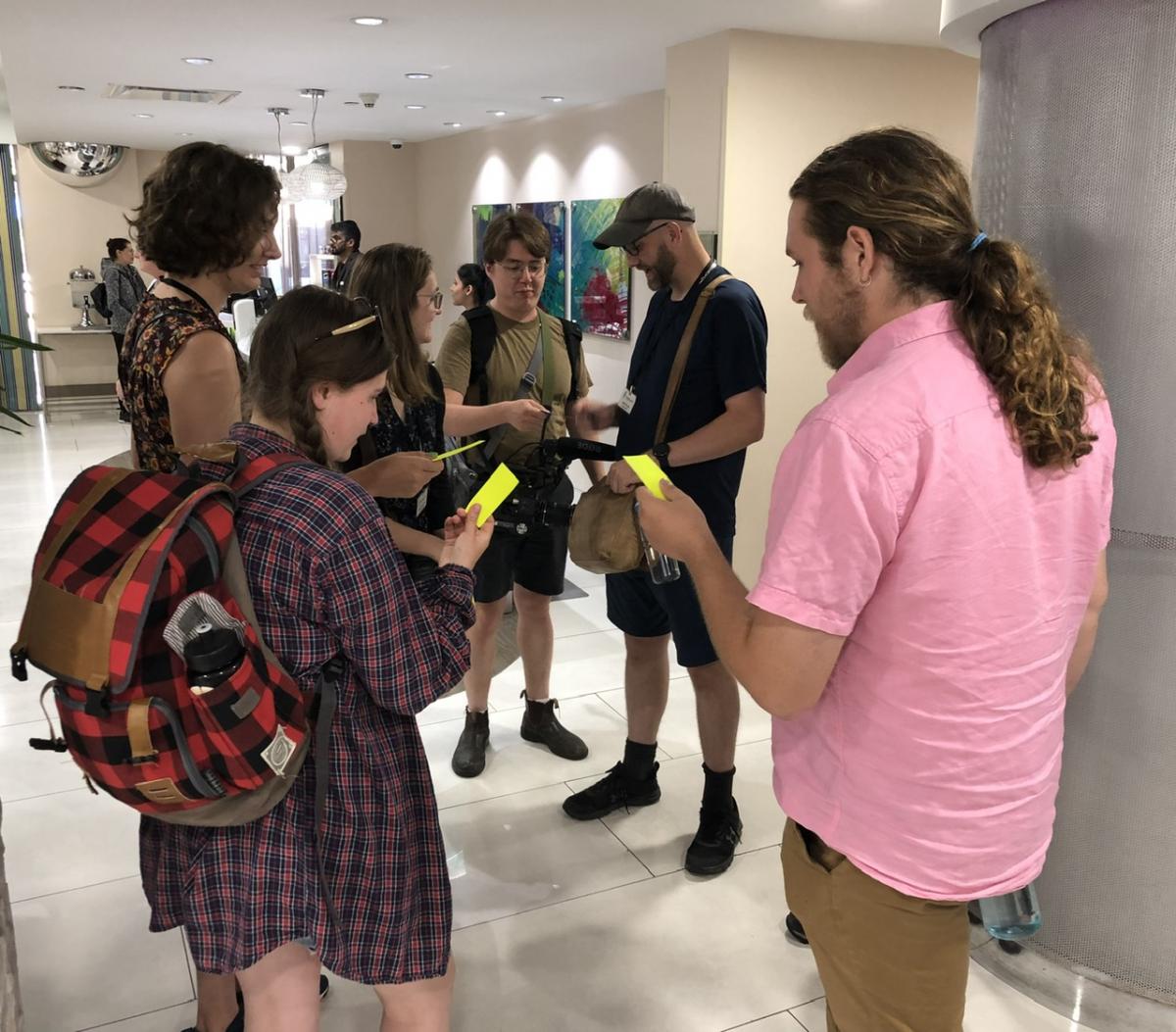
One of the goals of “Memories of Migration: Russlaender Tour 100” is to find ways to pass the story of that century-old journey to Canada from Russia to a younger generation.

Through generous sponsors, 16 young people have an opportunity to take part in the trip. I spoke with young adult participants who were on the first leg of the tour (from Quebec City to Kitchener-Waterloo, Ontario).
For Henry Enns Glavina, 20 and a student at Canadian Mennonite University, the tour was a chance to learn more about his Mennonite roots on his mother’s side.
“It was a chance to learn more about Russlaender Mennonite history, to learn more about the stories I heard about my grandfather,” he said.
Daniel Christie, 34, lived for 14 years in New Zealand before coming to Canada; his Kiwi accent could be heard on the tour.
His father, a New Zealander, met his mother, a Mennonite, when she went to Bible school in that country.
Her grandfather was Russlaender, leaving Ukraine in 1925 and arriving in Canada in 1926.
Now living in Calgary, Christie came on the tour because he has developed an interest in his Mennonite roots.
“I didn’t grow up in Mennonite culture,” he said, noting the tour was a chance to learn more about that part of his family’s history.

Callum Rempel, 22, is from Kitchener-Waterloo. “I’m interested in Mennonite history,” he said, noting the trip was a chance to hear stories about that migration and meet people from across the country.
He especially appreciated the visit to Grosse Isle, Quebec. “That was a story I didn’t know much about,” he said of how immigrants were checked there for communicable diseases.
Going on the tour was a natural thing for Winnipegger Andrew Brown to do—he’s the archivist and records manager at Mennonite Central Committee Canada.
Brown, 30, has roots in England through his father and a Mennonite mother. He’s interested in history.
Growing up on the prairies, he had one view of the Mennonite experience. The tour “gave me a wider view of the Mennonite story,” the graduate of Canadian Mennonite University said.
Lydia Peloquin-Epp, 26, didn’t learn much about Mennonite history while growing up.
Going on the tour gave the Winnipegger a chance to learn “more about the bigger story, and also about the Russlaender story,” she said.
What she enjoyed was hearing stories from older tour members. “I like how the tour gave them space to tell their stories,” she said.
People she talked to were also “grateful when I asked them to share their stories with me,” she said, adding hearing those stories helped bring history to life for her.

Jennifer Bergen, 34, works as an educator at the Mennonite Historical Society of B.C. in Abbotsford.
Her family came to Canada after the Second World War. “I wanted to go on the tour to learn more about the earlier immigration,” she said.
Winnipegger Kate Moulden, 23, came on the tour “to understand more about my family, to know about their trauma.”
That history “became more real to me because of the tour,” she said, adding she “enjoyed talking to older people and hearing their stories. It made it more real, not just a set of historical facts.”
For Aileen Friesen, co-director and associate professor with the Centre for Transnational Mennonite Studies at the University of Winnipeg, having young people on the tour was a key goal for tour organizers.
Many of the Russlaender wrote down their stories “so that future generations would remember them and what they experienced through those painful times of civil war, hunger and migration,” she said. “They wanted people to remember what happened to them.”
Having young people on the tour “is a way to do that, for them to hear those stories,” Friesen said. “They are the ones who will carry their stories forward.”

John Longhurst is a freelance writer from Winnipeg who is blogging about the first and third legs of the tour.
